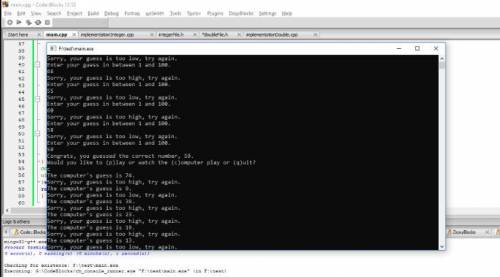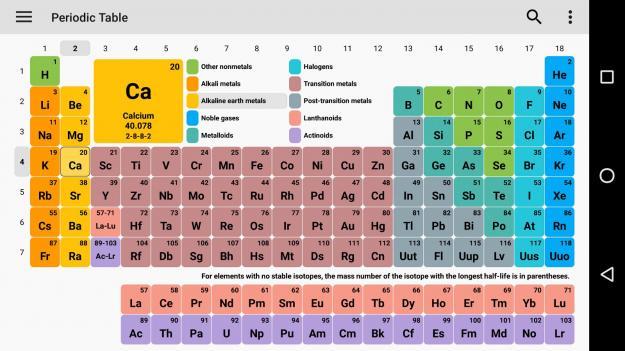 1
1 The position of equilibrium would not be appreciably affected by changes in the volume of the container for NiO(s) + CO(g) ⇌ Ni(s) + CO2(g).
Correct Answer : Option A
Explanation:
The equilibrium position tends to change with increase or decrease in pressure or volume, or both of them. This happens because considering change in volume, when the volume of the container increases, the reactant molecule increases i.e. mole of gases and thus the position of equilibrium shifts towards the right side. Similarly in case of decreasing volume, reactant molecule decreases and the equilibrium position shifts left side.
And in case, when the mole of gases on both the sides of the equation i.e. reactant side and product side are equal, it will not have any effect on the equilibrium position on increasing or decreasing volume, or pressure.
 1
1 The position of equilibrium would not be appreciably affected by changes in the volume of the container for NiO(s) + CO(g) ⇌ Ni(s) + CO2(g).
Correct Answer : Option A
Explanation:
The equilibrium position tends to change with increase or decrease in pressure or volume, or both of them. This happens because considering change in volume, when the volume of the container increases, the reactant molecule increases i.e. mole of gases and thus the position of equilibrium shifts towards the right side. Similarly in case of decreasing volume, reactant molecule decreases and the equilibrium position shifts left side.
And in case, when the mole of gases on both the sides of the equation i.e. reactant side and product side are equal, it will not have any effect on the equilibrium position on increasing or decreasing volume, or pressure.
 49
49  49
49 A C++ program was used for a user or the computer play a guessing game.
Explanation:
The C++ code to this question:
#include <iostream>
#include <cstdlib> // srand and rand functions
#include <ctime> // time function
using namespace std;
int main()
{
const int C = 100;// constant integer with defined value 100
char type;// type of option chosen
cout<<"Would you like to (p)lay or watch the (c)omputer play?"<<endl;
cin>>type;// input of type
do{// for first iteration you can't choose q
int x;
srand(unsigned(time(NULL))); // set different seeds to make sure each run of this program will generate different random numbers
x = ( rand() % C);
x++;// random value between 1 and 100
int check=-1;// make initial check=-1
int ends=C;// for type selected as c, make the initial guess to be chosen from 1 to 100
int start=1;
while(1)
{
if(type=='p')// if selected type is p
{
cout<<"Enter your guess in between 1 and 100."<<endl;
cin>>check;
}
else if(type=='c')// if selected type is c
{
check=start+(rand()%(ends-(start-1)));//get a random number between updated start and ends for computer guessing
cout<<"The computer's guess is "<<(check)<<"."<<endl;
}
else// if type is not equal to c or p or q
{
cout<<"Invalid option chosen"<<endl;
break;
}
if(check>x)// if the guess is greater
{
cout<<"Sorry, your guess is too high, try again."<<endl;
ends=check-1;// update ends in case type is c
}
else if(check<x)
{
cout<<"Sorry, your guess is too low, try again."<<endl;
start=check+1;// update start
}
else// if right number is selected
{
cout<<"Congrats, you guessed the correct number, "<<x<<"."<<endl;
break;
}
}
cout<<"Would you like to (p)lay or watch the (c)omputer play or (q)uit?"<<endl;
cin>>type;
}while(type!='q');
return 0;
}
Note: Kindly find an attached copy of the screenshot of execution of code below

A C++ program was used for a user or the computer play a guessing game.
Explanation:
The C++ code to this question:
#include <iostream>
#include <cstdlib> // srand and rand functions
#include <ctime> // time function
using namespace std;
int main()
{
const int C = 100;// constant integer with defined value 100
char type;// type of option chosen
cout<<"Would you like to (p)lay or watch the (c)omputer play?"<<endl;
cin>>type;// input of type
do{// for first iteration you can't choose q
int x;
srand(unsigned(time(NULL))); // set different seeds to make sure each run of this program will generate different random numbers
x = ( rand() % C);
x++;// random value between 1 and 100
int check=-1;// make initial check=-1
int ends=C;// for type selected as c, make the initial guess to be chosen from 1 to 100
int start=1;
while(1)
{
if(type=='p')// if selected type is p
{
cout<<"Enter your guess in between 1 and 100."<<endl;
cin>>check;
}
else if(type=='c')// if selected type is c
{
check=start+(rand()%(ends-(start-1)));//get a random number between updated start and ends for computer guessing
cout<<"The computer's guess is "<<(check)<<"."<<endl;
}
else// if type is not equal to c or p or q
{
cout<<"Invalid option chosen"<<endl;
break;
}
if(check>x)// if the guess is greater
{
cout<<"Sorry, your guess is too high, try again."<<endl;
ends=check-1;// update ends in case type is c
}
else if(check<x)
{
cout<<"Sorry, your guess is too low, try again."<<endl;
start=check+1;// update start
}
else// if right number is selected
{
cout<<"Congrats, you guessed the correct number, "<<x<<"."<<endl;
break;
}
}
cout<<"Would you like to (p)lay or watch the (c)omputer play or (q)uit?"<<endl;
cin>>type;
}while(type!='q');
return 0;
}
Note: Kindly find an attached copy of the screenshot of execution of code below

 1
1 Hey!
To honor the grandfather's impact on his communityTo explain that one person can affect many livesTo show admiration for veterans of World War IIWe can automatically eliminate option A and C because the story isn't about appreciating businesses and creating humor with the residents. This story is about why we should appreciate veterans with what all they do for their country. In the story we read that the grandfather is a big thing in his community. He is a man of wisdom. The grandfather created jobs for people who didn't have one, and served in World War 2. Therefore, options B, D, and E are correct.
Hope This Helped! Good Luck!
Answer:
AStep-by-step explanation:
The input force is 50 N. But it will not create not any change. No mechanical advantage is observed.
Calcium (Ca)(On the periodic table, ionization energy increases as you go up and to the right of the periodic table)


It will provide an instant answer!
